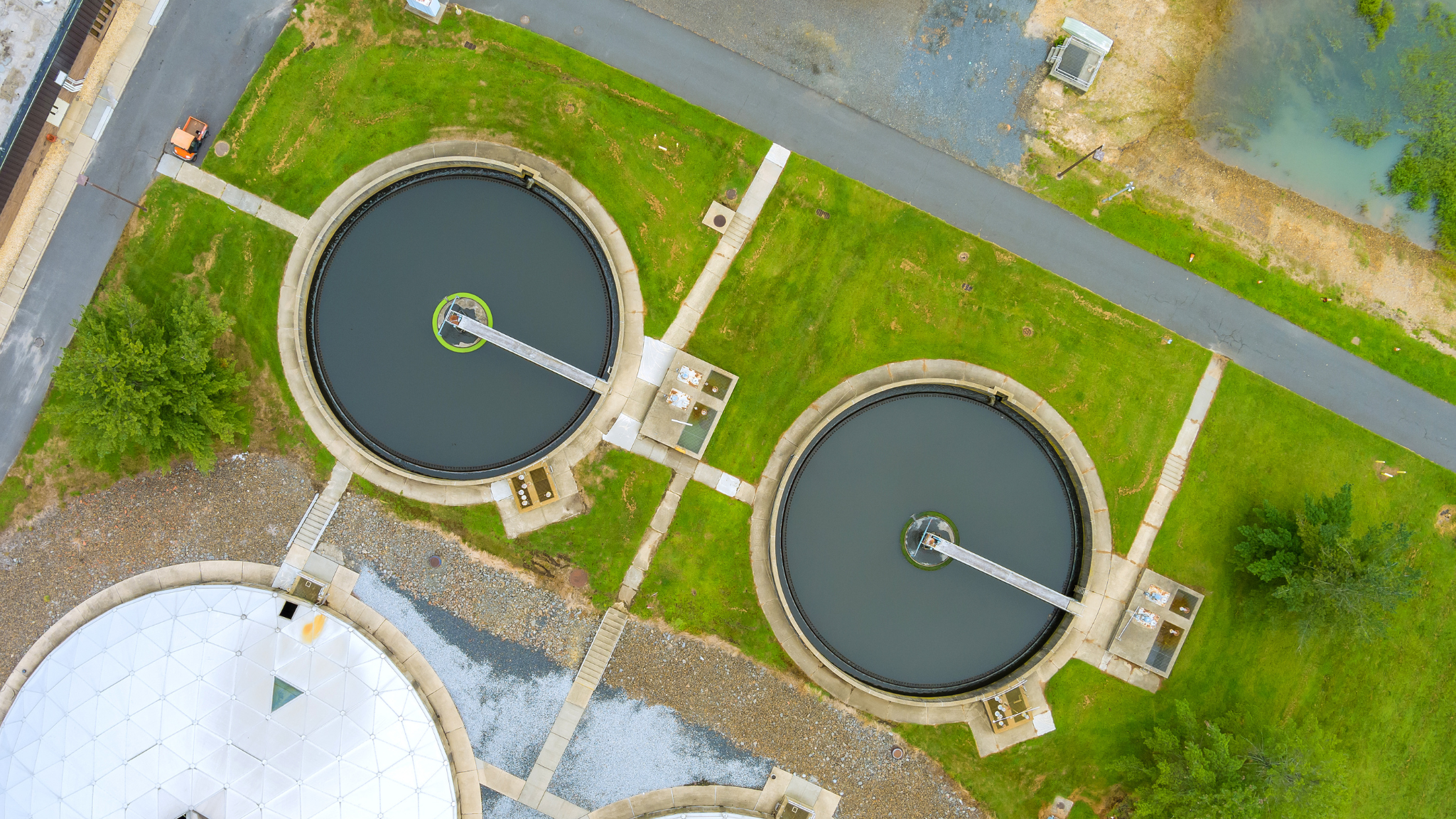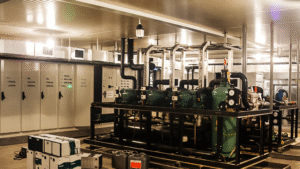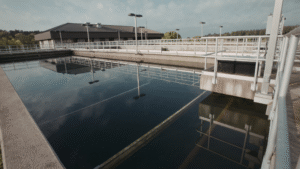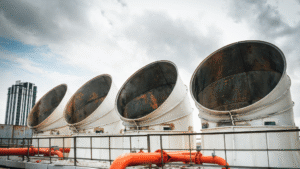Industrial facilities across manufacturing, petroleum refining, and the oil and gas industry generate large volumes of oily wastewater that must be treated before safe discharge or reuse. Effective oil wastewater treatment is therefore a critical part of responsible water management, helping facilities comply with regulatory standards and protect local ecosystems. When oily water is left untreated, it can release hydrocarbons, heavy metals, and other contaminants into nearby water bodies, threatening aquatic life and human health.
In many operations, oily wastewater results from processes that use lubricants, cutting fluids, or fuel derivatives. The resulting mixture often contains oil droplets, emulsified oils, and suspended solids that are difficult to separate from water. Conventional mechanical systems can remove larger particles, but they often struggle to treat stable oil emulsions and dissolved organic compounds efficiently. This is where chemical treatment becomes essential.
Selecting the right chemical treatment program is not simply a matter of choosing a coagulant or surfactant; it requires understanding the complex chemistry of waste streams, the characteristics of each facility’s wastewater treatment system, and the environmental discharge limits that apply. The correct formulation ensures efficient oil removal, minimizes sludge production, and maintains consistent system performance over time.
This guide provides a detailed look at how to select and apply oil treatment chemicals effectively within industrial water systems. By understanding the composition of oily wastewater, the principles behind chemical separation, and the operational factors that influence results, plant engineers and environmental managers can design treatment programs that improve efficiency, reduce costs, and support long-term sustainability.
Understanding Oily Wastewater in Industrial Systems
Oily wastewater is a common byproduct in many industrial systems, produced wherever oils or lubricants come into contact with process water. It originates from manufacturing operations, oil and gas industry activities, petroleum refining, and equipment maintenance processes involving cutting fluids, fuel, or hydrocarbons. Even food and chemical plants create oily water that contains fats, grease, and organic matter. Each source generates unique waste streams with varying oil concentrations, making accurate wastewater characterization essential before treatment.
The composition of oily wastewater generated in industrial operations typically includes oil droplets, emulsified oils, suspended solids, and fine small particles that form complex dispersions. Stabilizing agents, surfactants, and high temperatures often create persistent oil emulsions that resist gravity separation. These emulsions complicate oil removal, as traditional mechanical systems can handle free-floating oil but struggle with emulsified or dissolved contaminants. In addition, the presence of total suspended solids (TSS), dissolved organic matter, and heavy metals affects the overall efficiency of chemical treatment processes.
Without proper oil wastewater treatment, contaminated water containing hydrocarbons and other pollutants can infiltrate surface water and groundwater resources, leading to long-term water pollution that threatens ecosystems, human health, and crop production. Understanding the physical and chemical nature of oily wastewater helps engineers and operators determine the most effective treatment strategy—whether for discharge compliance or water reuse within the facility. This knowledge forms the foundation for designing efficient, sustainable wastewater treatment programs that protect both operations and the environment.
Key Challenges in Treating Oily Wastewater
Stability of Oil Emulsions
One of the most difficult aspects of oily wastewater treatment is breaking down stable oil emulsions. These emulsions form when oil droplets are dispersed into fine small particles, stabilized by surfactants, temperature fluctuations, or mechanical agitation. Because the droplets are so small, often less than a few micrometers in size, they resist separation through simple gravity or filtration. This stability complicates oil removal and reduces the effectiveness of conventional treatment equipment such as separators and skimmers.
Variability in Wastewater Composition
Industrial waste streams are rarely uniform. The concentration and type of oil, suspended solids, and dissolved organic matter can change daily depending on the process, materials used, or cleaning cycles. In the oil and gas or petroleum sectors, the mixture may also include residual drilling fluids, hydrocarbons, or crude oil traces, making it even harder to design a consistent chemical treatment plan. Fluctuations in pH, temperature, or salinity affect coagulant performance and settling rates, forcing operators to continuously adjust dosing and system controls to maintain efficiency.
Environmental and Operational Constraints
Beyond chemistry, facilities face challenges related to regulatory and operational limits. High total suspended solids (TSS) and total dissolved solids (TDS) can overload treatment plants, producing excessive sludge that must be dewatered and disposed of safely. At the same time, wastewater discharge regulations demand low oil content and minimal contaminants to prevent water pollution and protect nearby water bodies. Balancing treatment performance, cost control, and environmental compliance requires careful optimization of processes and chemicals.
Achieving reliable separation under these conditions means understanding both the physical behavior of contaminants and the capabilities of treatment systems.
Chemical Treatment Principles for Oil Wastewater
The Role of Chemical Treatment in Industrial Systems
In most industrial applications, chemical treatment plays a vital role in enhancing oil wastewater treatment efficiency. While physical processes like skimming or filtration can remove large oil droplets, chemical methods target stable oil emulsions, suspended solids, and dissolved pollutants that mechanical systems often miss. By introducing carefully selected chemicals, facilities can destabilize emulsions, promote oil removal, and prepare the water for downstream processes such as biological treatment, filtration, or reuse.
Coagulation and Flocculation
Two of the most common chemical methods used to treat oily wastewater are coagulation and flocculation. Coagulants, such as aluminum or iron salts, neutralize the electrical charges that keep fine oil particles suspended in water. Once the repulsive forces are reduced, the particles aggregate into larger clusters. Flocculants, often long-chain polymers, then help bind these clusters together into flocs that are easier to separate. These flocs can then be removed through sedimentation, filtration, or a dissolved air flotation (DAF) system. The combined process significantly reduces total suspended solids and improves overall separation efficiency.
Demulsification and pH Adjustment
When oil emulsions are particularly stable, demulsifiers are introduced to break the bonds between oil and water phases. These specialized chemicals work by disrupting the interfacial film around the oil droplets, allowing them to coalesce and separate more easily. Proper pH control is equally critical because many chemical reactions depend on maintaining optimal acidity or alkalinity. For instance, coagulants work best in specific pH ranges, and improper control can reduce reaction rates or cause unwanted sludge formation. Continuous monitoring helps maintain consistent treatment performance while minimizing chemical waste.
Integration with Dissolved Air Flotation (DAF) Systems
In modern treatment plants, chemical dosing is often integrated with mechanical systems such as DAF systems. Here, dissolved air bubbles attach to oil and solid particles, lifting them to the surface for removal. This method, when combined with optimized chemical treatment, achieves superior clarity and reduced contaminant levels. The process not only enhances efficiency but also decreases the load on downstream equipment and biological treatment stages. Effective integration ensures reliable compliance with wastewater discharge regulations while keeping operating costs under control.
Also read: Wastewater Purification System: Microbial Testing Explained
Factors Affecting Chemical Selection
Selecting the correct chemicals for oil wastewater treatment is a complex task that requires understanding multiple technical, environmental, and operational variables. Each treatment plant has unique influent characteristics, equipment configurations, and performance targets. The following factors play a major role in determining the right chemical treatment program.
1. Wastewater Characteristics
The quality and composition of wastewater generated by industrial systems greatly influence chemical performance. Key parameters to evaluate include:
- Oil type and concentration: Whether the contaminants are free oils, emulsified oils, or oil droplets affects which coagulants or demulsifiers are most effective.
- Total suspended solids (TSS) and total dissolved solids (TDS): High concentrations of solids can interfere with chemical reactions and lead to excess sludge formation.
- pH and temperature: Chemical reactions, solubility, and emulsion stability are all pH- and temperature-dependent.
- Presence of dissolved organic matter or heavy metals: These compounds may react with treatment chemicals, reducing efficiency or creating unwanted byproducts.
Understanding these characteristics ensures that the selected formulation targets specific contaminants without over-dosing or underperforming.
2. Operational Considerations
Process design and system configuration also determine which chemicals will deliver the best efficiency and control. Important operational factors include:
- Flow rate and retention time: Fast-moving waste streams require quick-acting chemicals or staged dosing.
- Existing system setup: Compatibility with current equipment, such as separators or DAF systems, is essential.
- Operator skill and monitoring capacity: Automated dosing systems can improve precision, but manual systems may need simpler formulations.
- Maintenance cycles and sludge handling: Some chemicals reduce sludge volume, while others increase it; both have cost and disposal implications.
3. Environmental and Regulatory Goals
Every facility must balance treatment performance with sustainability and compliance. Key factors include:
- Wastewater discharge limits for oil, solids, and other pollutants.
- Requirements for water reuse and water recycling within the facility.
- Local or federal environmental standards protecting surface water and groundwater resources.
- Alignment with long-term environmental management strategies.
By analyzing these elements holistically, engineers can select a chemical solution that meets both process and environmental objectives. Proper testing, including pilot trials and ongoing performance evaluation, ensures consistent, efficient treatment under real-world operating conditions.
Advanced Approaches and Technologies
Integrating Chemical and Biological Treatment
Modern oil wastewater treatment strategies increasingly combine chemical treatment with biological treatment to achieve higher efficiency and lower environmental impact. Chemical dosing removes free and emulsified oils, suspended solids, and hydrocarbons, allowing biological systems to focus on degrading dissolved organic matter that remains. This hybrid approach helps stabilize plant performance and minimizes overall sludge generation. In oil and gas industry applications, combining these two processes also enhances produced water management, improving consistency in wastewater discharge quality.
Membrane and Filtration Technologies
Advances in membrane filtration now allow for precise removal of small particles, emulsified droplets, and total dissolved solids that traditional methods cannot address. Systems designed with controlled pore size can separate contaminants efficiently while maintaining stable throughput. Membrane filtration often follows a dissolved air flotation (DAF) system to polish treated water before discharge or reuse. These technologies also support water recycling and groundwater resource protection by ensuring that treated effluent meets stringent purity standards. When paired with effective chemical conditioning, filtration membranes experience less fouling and require fewer cleanings, extending equipment life and reducing operational costs.
Innovations in Produced Water and Reuse Applications
In the gas extraction and petroleum sectors, managing produced water has become a major environmental priority. High levels of crude oil, grease, and fine solids can make these waste streams extremely challenging to treat. New formulations of coagulants, demulsifiers, and surfactants have been developed to break down complex oil emulsions and enhance oil removal rates. Integrating these chemicals with DAF or membrane systems enables operators to achieve higher separation efficiency, even in high-load conditions.
Beyond compliance, many facilities are adopting water reuse and water recycling programs that transform treated wastewater into a valuable resource for cooling, washing, or irrigation.
Also read: Advanced Coagulation Methods for Industrial Wastewater Treatment
ETI’s Expertise in Oil Wastewater Treatment
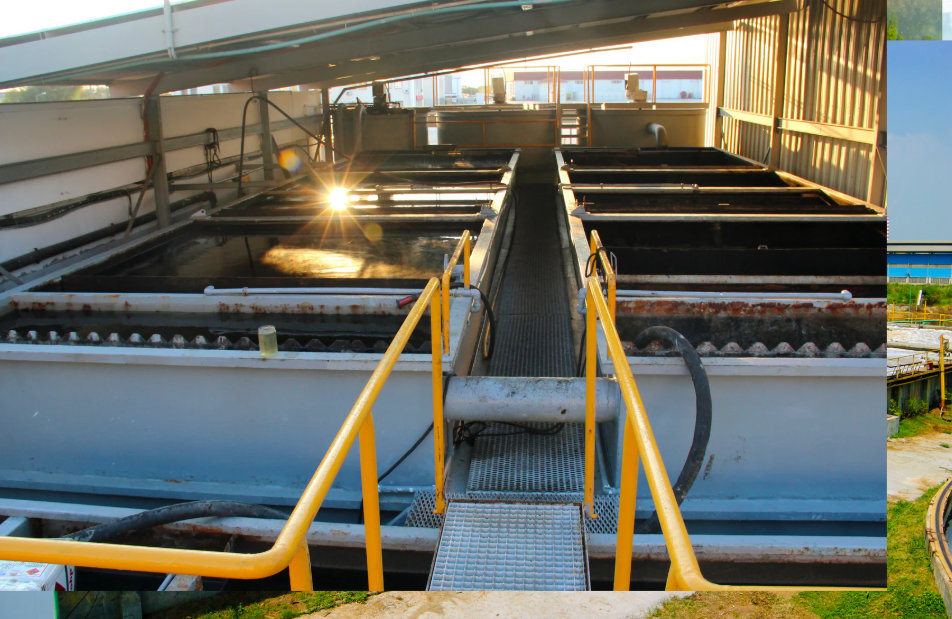
Comprehensive Solutions for Effective Oil Separation
ETI specializes in advanced oil wastewater treatment technologies that help industries achieve clean, compliant, and efficient water management. Excess oil and hydrocarbons in water systems can cause fouling, corrosion, and environmental contamination if not properly managed. ETI’s solutions are designed to efficiently separate and remove oil contaminants, supporting water treatment companies and industrial facilities in meeting strict wastewater discharge regulations.
By offering both chemical and mechanical oil separation options, ETI ensures each system achieves the right balance between performance, cost control, and sustainability. Facilities that implement ETI’s programs benefit from lower maintenance requirements, improved operational efficiency, and long-term environmental protection.
Tailored Formulations and Proven Technologies
ETI’s approach begins with Water Quality Analysis to determine the concentration and type of oil present. From there, the company designs customized treatment formulations and integrates them into existing treatment systems. Their portfolio includes:
- Oil-Water Separation Agents – Break down and disperse oil for improved oil removal and reduced carryover.
- Emulsion Breakers – Separate emulsified oils efficiently to prevent fouling in downstream processes.
- Coagulation & Flocculation Treatments – Support sedimentation and filtration of suspended solids in industrial effluent.
- Hydrocarbon Absorbents & Filtration Media – Capture free and dispersed oil to protect sensitive equipment and membranes.
These technologies deliver scalable, reliable results for industries such as manufacturing, oil and gas processing, power generation, and food production.
Partnering for Long-Term Performance
With decades of experience, ETI continues to be a trusted partner in oil wastewater treatment, helping clients protect critical infrastructure and comply with evolving environmental standards.
To explore ETI’s full range of oil separation technologies, visit ETI’s Oil Treatment Solutions.
Conclusion
Selecting the right chemicals for oil wastewater treatment is more than an operational choice—it’s a commitment to efficiency, compliance, and environmental responsibility. By understanding the composition of oily wastewater, choosing appropriate treatment methods, and applying proven formulations, industries can ensure clean water, reduced waste, and optimized performance across their facilities.
To find the most effective and scalable oil treatment program for your facility, contact ETI today at go2eti.com/oil-treatment or call 610-286-2010 to speak with a specialist about optimizing your wastewater treatment process.
Frequently Asked Questions (FAQs)
What are the main types of oil found in industrial wastewater?
Industrial facilities generate oily wastewater containing crude oil, lubricants, cutting fluids, fats, and grease. These compounds can exist as free oil, dispersed droplets, or stable oil emulsions, each requiring different treatment strategies for effective removal.
How does a dissolved air flotation (DAF) system help treat oily wastewater?
A DAF system introduces dissolved air into the water, forming microbubbles that attach to oil droplets and suspended solids. These float to the surface, where they can be skimmed away. When combined with optimized chemical treatment, DAF systems enhance oil separation and improve effluent clarity.
Can oily wastewater treatment address heavy contaminants like metals and hydrocarbons?
Yes. Advanced chemical and biological treatment processes can target heavy metals, hydrocarbons, and organic matter in complex waste streams. Properly designed systems ensure efficient removal and protect downstream equipment and biological systems.
How does wastewater recycling benefit industrial facilities?
Implementing water recycling and reuse programs reduces the demand for fresh water, supports groundwater and surface water conservation, and minimizes water pollution. Treated wastewater can be repurposed for cleaning, cooling, or other non-potable uses, improving sustainability and lowering costs.
Why is produced water management important in the oil and gas industry?
In the oil and gas sector, produced water from gas extraction and refining operations contains petroleum compounds and solids that must be treated before disposal. Proper produced water management safeguards the environment, reduces regulatory risk, and supports responsible operations.

